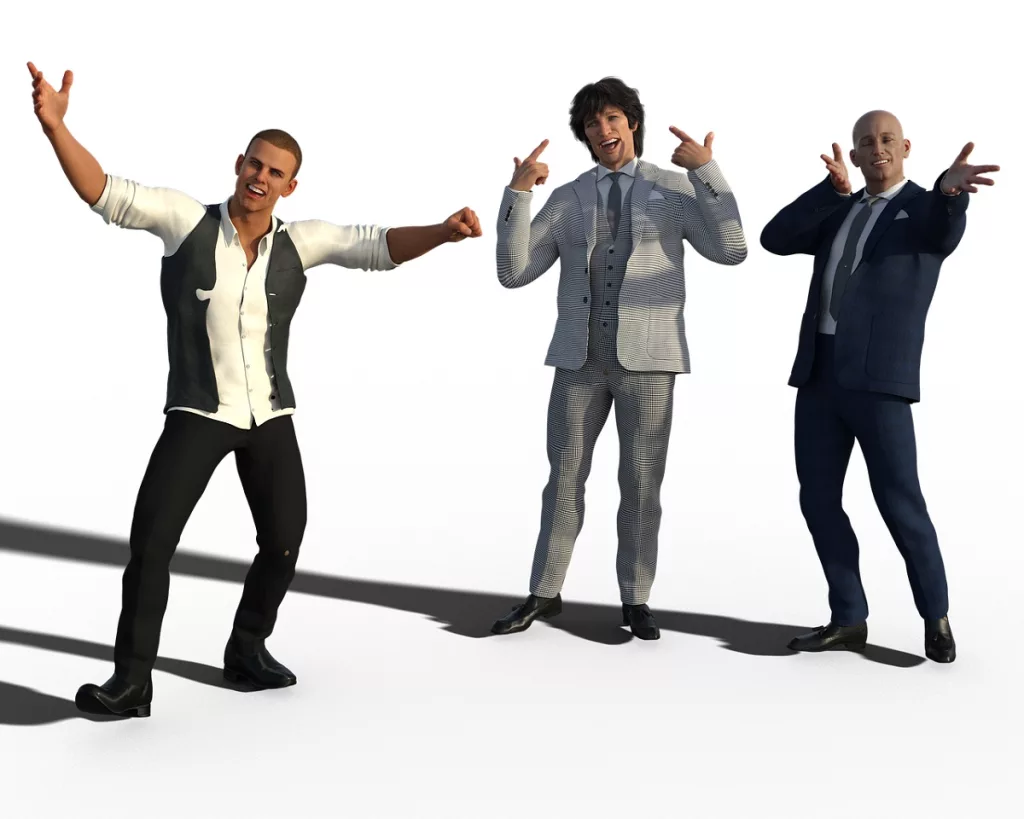How Animation Revolutionized the Video Industry?

Animation has played a significant role in shaping the video industry since its inception. From the early days of hand-drawn animation to the advanced computer-generated graphics of today, animation has revolutionized the way we tell stories, advertise products, and educate people.
The dawn of animation in the video industry dates back to the early 1900s when animators began experimenting with hand-drawn animation techniques. Walt Disney’s Snow White and the Seven Dwarfs, released in 1937, was the first full-length animated feature film and a significant milestone in the animation industry. The popularity of animation continued to grow, and soon, cartoons became a staple of television programming, captivating audiences of all ages.
Animation has had a profound influence on storytelling, allowing creators to bring their imaginative worlds and characters to life in ways that live-action films cannot. Animation has also had a significant impact on marketing and advertising, providing brands with a unique way to showcase their products and services. Technological advancements have further propelled the animation industry, making it possible to create more complex and realistic animations than ever before.
Key Takeaways
- Animation has revolutionized the video industry, allowing creators to tell stories and advertise products in unique and imaginative ways.
- The dawn of animation in the video industry dates back to the early 1900s with hand-drawn animation techniques, and it has continued to evolve with technological advancements.
- Animation has had a profound impact on storytelling, marketing, and advertising, and it will continue to shape the video industry in the years to come.
The Dawn of Animation in the Video Industry
Animation has been an integral part of the video industry for decades. It has revolutionized the way we tell stories, entertain, and educate. The dawn of animation in the video industry can be traced back to the early 1900s when the first animated films were made. These films were simple and primitive, made with hand-drawn animation with Cel Animation.
In the 1930s, animation took a giant leap forward with the release of Walt Disney’s Snow White and the Seven Dwarfs. This was the first animated feature film, and it was a massive success. The film’s success opened the door for other studios to produce animated feature films, and the animation industry began to grow rapidly.
During the 1950s and 1960s, animation became an essential tool for education and propaganda. Animated films were used to teach children about science, history, and social issues. They were also used to promote political ideologies and government policies.
The 1970s and 1980s saw the rise of animation on television. Animated TV shows such as The Flintstones, The Jetsons, and Scooby-Doo became popular with audiences of all ages. These shows paved the way for more adult-oriented animated shows such as The Simpsons and South Park.
The 1990s saw a significant shift in the animation industry with the introduction of computer-generated imagery (CGI). CGI allowed animators to create more realistic and complex animations than ever before. Pixar’s Toy Story, released in 1995, was the first feature-length film to be entirely computer-animated. The success of Toy Story led to the creation of other computer-animated films such as Shrek, Finding Nemo, and The Incredibles.
In conclusion, the dawn of animation in the video industry has had a profound impact on the way we tell stories, entertain, and educate. From the early days of hand-drawn animation to the introduction of CGI, animation has continued to evolve and push the boundaries of what is possible in the video industry.
Influence on Storytelling
Animation has had a profound impact on the way stories are told in the video industry. It has allowed for the creation of unimaginable worlds and has enhanced narratives through the use of visual effects.
Creating Unimaginable Worlds
Animation has made it possible to create worlds that were previously unimaginable. Through the use of computer-generated graphics, animators can bring to life settings that would be impossible to construct or film in real life. This has allowed for the creation of entire universes, such as the ones seen in the Star Wars or Avatar franchises.
In addition, animation has also allowed for the creation of characters that are not human or even exist in the real world. Animators can create creatures with unique abilities and traits, such as the lovable monsters in Monsters Inc. or the talking animals in Zootopia. These characters add a level of creativity and imagination to stories that would not be possible without animation.
Enhancing Narrative Through Visual Effects
Animation has also allowed for the enhancement of narrative through the use of visual effects. Animators can create stunning action sequences and special effects that would be difficult or impossible to achieve in live-action films. This has allowed for the creation of visually stunning films such as The Incredibles or How to Train Your Dragon.
Furthermore, animation can also be used to enhance the emotional impact of a story. For example, animators can use color and lighting to create a specific mood or atmosphere. This is especially evident in films such as Inside Out, where the use of color and lighting is used to represent the emotions of the characters.
In conclusion, animation has had a significant impact on the video industry by allowing for the creation of unimaginable worlds and enhancing narratives through visual effects. The use of animation has allowed for the creation of stories that would not be possible in live-action films and has added a level of creativity and imagination to the industry.
Impact on Marketing and Advertising
Animation has revolutionized the way marketing and advertising are done. It has opened up new possibilities for businesses to communicate their message to their target audience. In this section, we will discuss how animation has impacted marketing and advertising.
Animation in Commercials
Commercials are an integral part of marketing and advertising. The use of animation in commercials has made them more engaging and memorable. Animation allows businesses to create characters and stories that resonate with their audience. This helps in creating an emotional connection with the viewers.
Moreover, animation can simplify complex concepts and information. This makes it easier for viewers to understand the message being conveyed. It also allows businesses to showcase their products or services in a unique and creative way.
Animation in Promotional Videos
Promotional videos are an effective way to showcase a product or service. Animation has made it easier for businesses to create promotional videos that are engaging and informative. Animation allows businesses to showcase their products or services in a way that is visually appealing and easy to understand.
Moreover, animation can be used to create explainer videos. Explainer videos are short videos that explain a complex concept or process in a simple and easy to understand way. This makes it easier for businesses to educate their audience about their products or services.
In conclusion, animation has had a significant impact on marketing and advertising. It has allowed businesses to create engaging and memorable commercials and promotional videos. It has also made it easier for businesses to communicate their message to their target audience.
Technological Advancements
The video industry has undergone a significant transformation over the years due to advancements in technology. The animation industry, in particular, has been a major beneficiary of these technological advancements. In this section, we will discuss some of the technological advancements that have revolutionized the animation industry.
Computer-Generated Imagery (CGI)
Computer-generated imagery (CGI) has been a game-changer in the animation industry. It involves the use of computer software to create images, animations, and special effects. With CGI, animators can create realistic and complex 3D models and environments that were previously impossible to achieve with traditional animation techniques.
CGI has also made it possible to create highly detailed and lifelike characters and creatures. This has opened up new possibilities for storytelling and has enabled animators to create more immersive and engaging experiences for audiences.
Virtual Reality
Virtual reality (VR) is another technological advancement that has had a significant impact on the animation industry. VR technology allows users to experience a completely immersive and interactive environment. This has enabled animators to create virtual worlds that users can explore and interact with in real-time.
VR technology has also made it possible to create interactive stories and experiences that users can participate in. This has opened up new possibilities for storytelling and has enabled animators to create more engaging and immersive experiences for their audiences.
Augmented Reality
Augmented reality (AR) is a technology that overlays digital content onto the real world. This has opened up new possibilities for animators to create interactive experiences that blend the real world with digital content.
AR technology has also made it possible to create educational and informative experiences that users can interact with in real-time. This has enabled animators to create engaging and informative content that can help users learn and understand complex concepts in a more interactive and engaging way.
In conclusion, technological advancements have played a significant role in the transformation of the animation industry. CGI, VR, and AR have opened up new possibilities for animators to create more engaging, immersive, and interactive experiences for their audiences. With continued advancements in technology, we can expect to see even more exciting developments in the animation industry in the future.
Animation in Education
Animation has revolutionized the way students learn and interact with educational content. By combining audio messages with tailored visual cues and graphics, animation serves the dual functions of explaining complex concepts and engaging students in a fun and interactive way. In this section, we will explore the impact of animation on education, specifically in educational videos and e-learning.
Educational Videos
Educational videos have become increasingly popular as a way to deliver educational content to students. Animation has played a significant role in the success of educational videos by making complex concepts more accessible and engaging. Animated videos can be used to explain difficult concepts in a way that is easy to understand, and they can be used to create engaging stories that capture students’ attention.
One of the benefits of using animation in educational videos is that it allows for the visualization of abstract concepts. For example, in a science class, animation can be used to show the inner workings of a cell or the process of photosynthesis. This makes it easier for students to understand complex concepts that cannot be easily visualized.
E-Learning
E-Learning has become an increasingly popular way to deliver educational content to students. Animation has been a key component of e-learning because it allows for the creation of interactive and engaging content. By using animation, e-learning platforms can create interactive quizzes, games, and other activities that make learning fun and engaging.
One of the benefits of using animation in e-learning is that it allows for personalized learning. Animations can be customized to meet the needs of individual learners, allowing them to learn at their own pace. Additionally, animations can be used to create simulations that allow students to practice skills in a safe and controlled environment.
In conclusion, animation has had a significant impact on education by making complex concepts more accessible and engaging. Whether it’s through educational videos or e-learning, animation has become an essential tool for educators looking to provide students with a fun and interactive learning experience.
Conclusion
In summary, animation has revolutionized the video industry in many ways. It has made entertainment more engaging, enjoyable, and accessible to people of all ages. The impact of animation on the movie industry has been tremendous, with big companies like Walt Disney and Pixar being greatly influenced by the invention of computer animation.
Animation video production is an exciting and creative medium that offers numerous benefits to businesses, including increased engagement, cost-effectiveness, versatility, brand recognition, and memorable content. There are numerous types of animation videos, including 2D and 3D animations. However, creating an animation video requires a lot of effort, time, and resources.
The use of VFX and 3D animation in film has grown exponentially in recent years, changing the way we experience movies. These technologies are pushing the boundaries of storytelling and taking the film industry by storm. VFX, or visual effects, are used to create images that cannot be captured by traditional photography. 3D animation is used to create realistic characters and objects that would be impossible to create with traditional filmmaking techniques.
Overall, animation has had a significant impact on the video industry and will continue to do so in the future. As technology advances, we can expect to see even more impressive and innovative animation techniques that will enhance our viewing experience.








